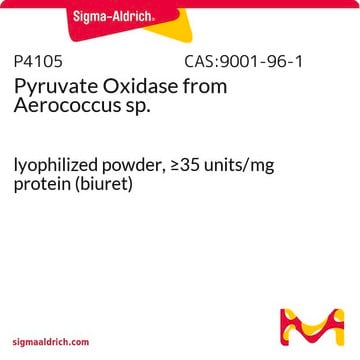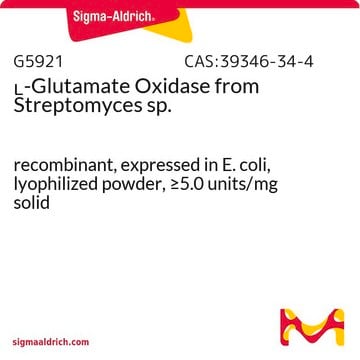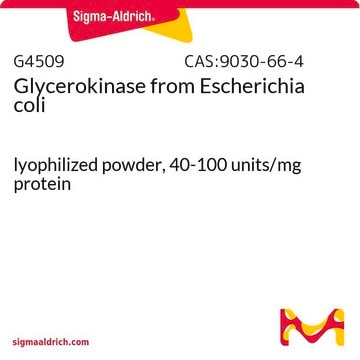The K12 strain information can be found on the UniProt website under the following entry: P0A9C5.
G1270
L-Glutamine Synthetase from Escherichia coli
lyophilized powder, 400-2,000 units/mg protein
Synonym(s):
L-Glutamate:ammonia ligase (ADP-forming)
Select a Size
$612.75
List price$645.00Save 5%Available to ship onApril 07, 2025Details
Select a Size
About This Item
$612.75
List price$645.00Save 5%Available to ship onApril 07, 2025Details
Recommended Products
form
lyophilized powder
Quality Level
specific activity
400-2,000 units/mg protein
purified by
affinity chromatography
contains
dithioerythritol as preservative
composition
Protein, ~5% Lowry
solubility
H2O: soluble 0.95-1.05 mg/mL, clear to hazy
UniProt accession no.
foreign activity
ATPase <0.2%
storage temp.
−20°C
Gene Information
Escherichia coli K12 ... glnA(948370)
General description
Application
Biochem/physiol Actions
Unit Definition
Physical form
signalword
Danger
hcodes
pcodes
Hazard Classifications
Resp. Sens. 1
Storage Class
11 - Combustible Solids
wgk_germany
WGK 1
flash_point_f
Not applicable
flash_point_c
Not applicable
ppe
Eyeshields, Gloves, type N95 (US)
Choose from one of the most recent versions:
Certificates of Analysis (COA)
Don't see the Right Version?
If you require a particular version, you can look up a specific certificate by the Lot or Batch number.
Already Own This Product?
Find documentation for the products that you have recently purchased in the Document Library.
Customers Also Viewed
-
From which E. coli strain is your product G1270 L-Glutamine Synthetase from Escherichia coli isolated?
1 answer-
Helpful?
-
Active Filters
Our team of scientists has experience in all areas of research including Life Science, Material Science, Chemical Synthesis, Chromatography, Analytical and many others.
Contact Technical Service












